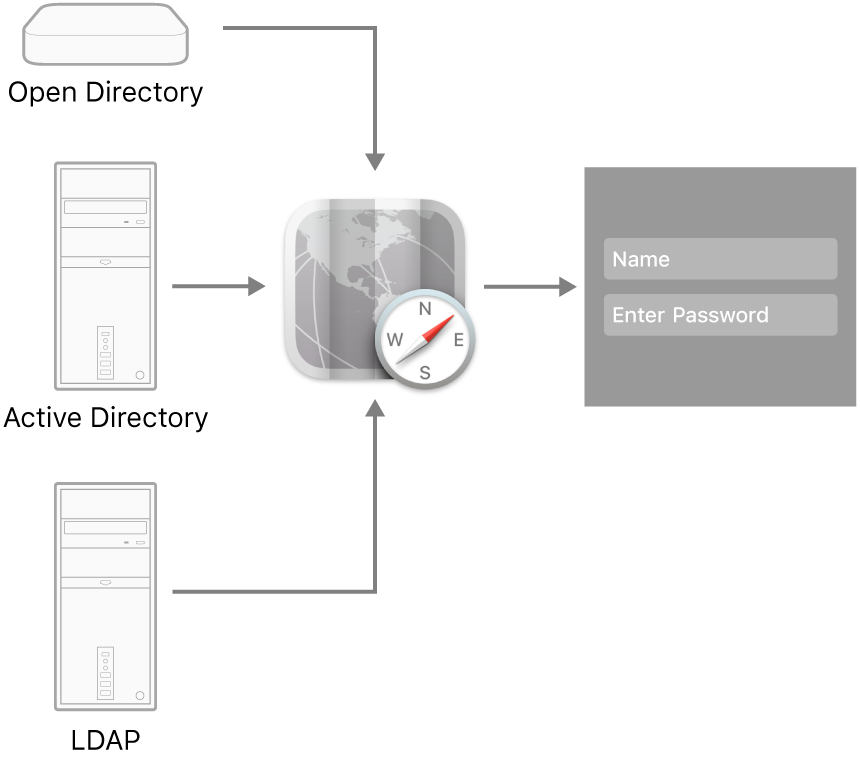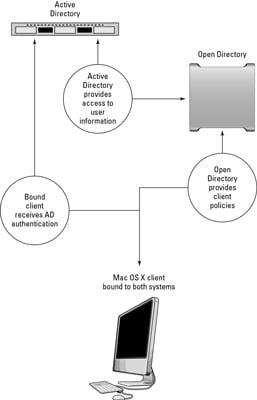

- Active directory on mac mac os x#
- Active directory on mac install#
- Active directory on mac mac#
- Active directory on mac windows#

This allows us to get around any DNS configuration shenanigans.įor the Active Directory settings put in the pre-Windows 2000 computer name from the above step.
Active directory on mac windows#
This is usually the same as your “Primary DNS Suffix” we got from our Windows machine. Use your fully qualified domain name (FQDN).
Active directory on mac mac#
Click join and fill everything out as follows: Mac Active Directory Enrollment You will now see a “Network Account Server” with a Join button. Mac Users and Groups Settingsįrom here we are going to select “Login Options” in the bottom left hand of the screen. Next go back to the Settings app and choose “Users and Groups”. Now switch back to the Mac and let’s perform the bind. Press OK to create the Active Directory account. Active Directory New Computer (Dialog Box) If that isn’t possible then use the pre-Windows 2000 computer name when you join Active Directory or you will get an error (see Troubleshooting). This is demonstrated in the screenshot below. I strongly recommend keeping your Mac name to 15 characters or less. Next open up Active Directory and create a new “Computer” account. Mac AD Join Successful Prestaging AD Computer Account Usually the existing one will be something like “admin’s iMac”. Set this to the computer name you are going to join the domain with. Go to the Settings app on your Mac again and choose “Sharing”. Make sure it matches your already joined machine! Configure Network “Sharing” Name On my machine I got all of the DNS servers but only one of the search domains. Next verify that all of the DNS servers coming up on your Windows machine are also put into the Mac DNS servers list. You want to make sure that all of the DNS Suffix Search List entries are listed in the “Search Domains” box pictured below: Mac DNS Settings I have bolded the important things you need to verify. The easiest way to get everything you need is to issue a ipconfig /all from the command prompt of a Windows machine already joined: C:\Users\JChambers>ipconfig /all Windows can get away with this but when we are joining our Mac we need to make sure everything is populated. In many networks DHCP won’t populate everything you need. One of the big roadblocks to joining Active Directory is DNS settings. This guide will walk you through the basic steps to join Active Directory without having to resort to using third party software.

Active directory on mac mac os x#
In most corporate environments installing third party software is frowned upon due to licensing and security considerations so I was determined to get the native Mac OS X tools to work.
Active directory on mac install#
When I started researching the topic I saw a whole lot of advice to install third party software to join a Mac to Active Directory. High Sierra and Mojave now require a Active Directory functional level of Windows Server 2008 or later and are still pretty tricky to get to join it.

Otherwise, they may not be given administrative rights on the Macs despite the AD group being added to the local admin group.Joining a Mac to Active Directory has continued to get more and more difficult over the years. Groups can be specified by domain to ensure security is not compromised, e.g., “domain thing to watch for with adding AD groups is that the group whose members you want to give administrator rights to needs to be listed as the Primary Group in AD for those accounts. Sudo dseditgroup -o edit -a “DOMAIN\group name” -t group adminįor Active Directory, you can also use the dsconfigad tool to enable or disable administrative rights for a particular AD group: If you’re adding an AD group, you may need to add the AD domain’s name: Sudo dseditgroup -o edit -a “group name” -t group admin To add a group from your directory service to your Mac, you can use the following command: If your Mac environment is using a directory service for authentication (like Apple’s Open Directory or Microsoft’s Active Directory), you can add a group from your directory service to be a member of your Mac’s local admin group (members of which have administrative rights on your Macs.) This helps simplify granting administrative rights on your Macs, as you can add and remove accounts to your server-end group to grant and remove administrative rights for those accounts on your Macs.


 0 kommentar(er)
0 kommentar(er)
